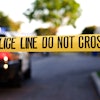
Editor's note: This is a continuation of a yearlong series that is designed to help dentists and team members understand their practice management software better. Today, we are providing you with another Eaglesoft tip from Ann-Marie DePalma, a technology adviser with Patterson Dental. Earlier this month, we posted a Q&A from experts representing Dentrix and Curve Dental. Additionally, we are also working on the same article format for other practice management software systems.
Q: What are best practices for insurance estimations in Eaglesoft?
A: Within Eaglesoft, there are potentially three sets of fees:
- The master standard fee
- A fee schedule
- A coverage book
 Ann-Marie DePalma, CDA, RDH, MEd.
Ann-Marie DePalma, CDA, RDH, MEd.The master standard fee is the fee the practice charges for any service code. A fee schedule is any fee that is different than the office's standard fee. A fee schedule takes any insurance adjustments on the day of service, providing the practice with its true production numbers without having to figure out any adjustments from the production.
A coverage book, meanwhile, allows for insurance estimation based on a percentage or dollar amount of the usual and customary rate (UCR) from the insurance carrier instead of the fee actually charged. The standard fee, however, will be walked out at the time of service. Therefore, any adjustments are taken at the time of insurance payment, not on the day of service. A coverage book allows an office to set up exceptions to the insurance estimation, such as the downgrading of composites to amalgam fees for in-network providers. Coverage books allow offices to track gross production, while fee schedules track net production. Both fee schedules and coverage books use the same information from the insurance carriers (an insurance fee schedule) but use it in a different manner within the software.
A fee schedule can be attached to the employer or to a patient. When attached to a patient, however, the fee schedule overrides any standard fee or any fee attached in the employer. To attach to a patient, edit Patient Information, Preferences, Fee Schedule. A fee schedule attached to an employer can be entered under the Lists/Employer-Coverage Lists - edit, Fee Schedule. The same steps can be used to attach a coverage book to an employer, Lists/Employer-Coverage Lists - edit, Coverage Book.
To set up a fee schedule, Lists/Fee Schedule List
There are three options when New is chosen:
- Automatically setting up all service codes
- Individually setting up service codes
- Utilizing an existing fee schedule
Automatically setting up all service codes enters all service codes from the master standard fee list. If an office does not use a fee schedule for a specific code, it can be deleted from the fee schedule. If an insurance plan does not cover a particular service but the practice wants to charge the patient, delete the service code from the fee schedule and the software looks to the master standard fee for that specific fee.
When a practice chooses to individually set up service codes, the individual codes will need to be entered. Once a fee schedule is established, for example Delta, that fee schedule can be used as the basis for a new fee schedule (BCBS) where all that will need to be entered will be the fees that are different from Delta to BCBS by using an existing fee schedule (Delta). The standard fee column automatically is imported from the master standard fee list and the practice will have to enter the allowable fee from the insurance carrier's fee schedule. Using a fee schedule, however, will require the practice to update the fee schedule whenever a new update is active and released from the insurance carrier. Not updating a fee schedule accurately may cause issues during walkouts and treatment plans or with insurance payments.
To set up a coverage book, Lists/Coverage Book - List/New
Deciding on whether to use write-off, copay, or neither is a decision the practice will make depending on several factors. Each service code for the coverage book will need to be manually entered by the practice. Some practices include all codes, while others only their exceptions, such as downgrades. The practice can also decide if the coverage book is going to consider write-offs or copayments on a percentage or dollar amount or look to the employer's service types for the UCR.
Once an initial coverage book is created, it can be saved as new for another insurance carrier's fees. Additionally, the coverage book is a living document that can be updated when explanations of benefits are received from the patient's insurance payment screen. Coverage books can be created for each insurance carrier with whom the practice is in-network.
When estimating for insurance, the information contained in fee schedules and coverage books and in the employer screen for deductibles, maximums, beginning month, and service type percentages/deductibles must be accurate. To assist the practice in determining the patient's benefits and percentages, utilizing Real Time Eligibility (RTE) is a great tool. The employer screen information does not change unless the practice manually updates the information, while the information in the edit patient screen for remaining benefits and remaining deductibles updates as the patient is walked out or will need to be manually updated after obtaining RTE.
Additionally, when the practice runs End of Month, the checkbox for resetting insurance balances for insurance plans with an anniversary month between "x" and "x" must also be set accordingly. To achieve accurate patient insurance estimations, it takes several pieces to work effectively. If any portion is set up inaccurately, the practice will not achieve the correct estimation for the patient, whether coverage books or fee schedules are utilized.
You can find information on fee schedules or coverage books by searching FAQ 12470 (using fee schedules), FAQ 12759 (downgrade to composite), FAQ 12769 (composite with write off), FAQ 19406 (training videos for coverage books and fee schedules), and/or FAQ 124 (insurance estimation). You can also contact your local Patterson Dental branch and speak with the software technology adviser regarding practice-specific remote or in-office Eaglesoft training or e-services such as RTE.
Ann-Marie DePalma, CDA, RDH, MEd, is a fellow and certified educator of the Association of Dental Implant Auxiliaries (ADIA) and a fellow of the American Academy of Dental Hygiene (AADH). She spent more than 25 years in clinical hygiene and is currently employed as a technology adviser/trainer for Patterson Dental. She can be reached by email.
The comments and observations expressed herein do not necessarily reflect the opinions of DrBicuspid.com, nor should they be construed as an endorsement or admonishment of any particular idea, vendor, or organization.


















